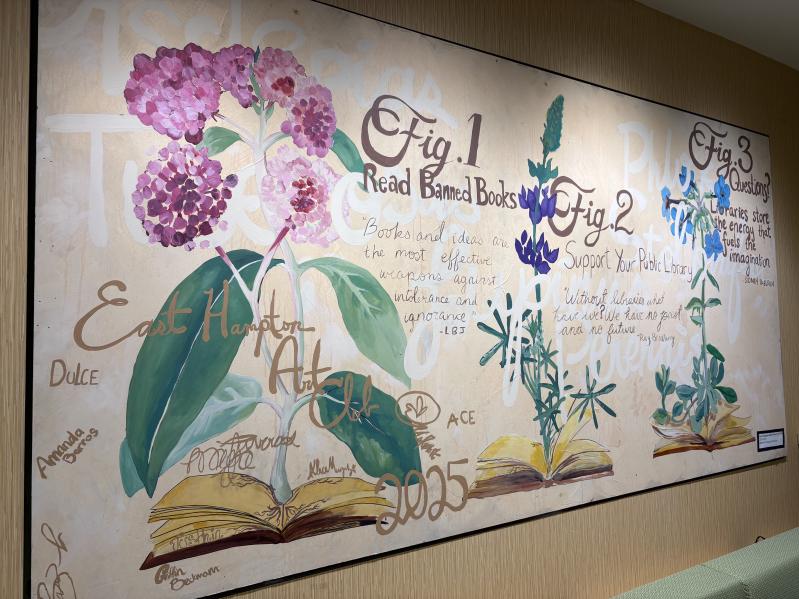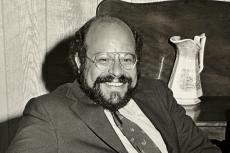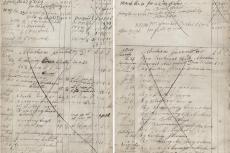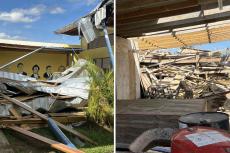With Banned Books Week set to begin on Monday, local librarians report that, for the most part, South Fork libraries have dodged the clutches of a censorship trend that has been on the rise across the country and elsewhere on Long Island.
Dennis Fabiszak, executive director of the East Hampton Library, described the “strong support system” that librarians on the South Fork generally have. He said the East Hampton community is unwavering in the support of its librarians, and in return, controversial books that may be under fire elsewhere remain on the shelves here. While a handful of titles have been questioned by concerned adults, he said, it is under the librarians’ jurisdiction what is or is not deserving of removal.
Whereas titles such as “Front Desk” by Kelly Yang and “The Bluest Eye” by Toni Morrison have been removed from some library catalogs farther west, these remain on the shelves in East Hampton. And Sag Harbor’s John Jermain Memorial Library maintains copies of titles banned elsewhere such as “Persepolis” by Marjane Satrapi, “Their Eyes Were Watching God” by Zora Neale Hurston, and “Black Boy” by Richard Wright.
Jamie Mott, a librarian at Pierson Middle and High School in Sag Harbor, sees it as her mission to protect the school’s collection from censorship, which she called a “heartbreaking” issue. It is intellectually stimulating for children to read freely, she said, and by banning books, that stimulation is being stripped away.
Although she hasn’t directly experienced book banning or library-related censorship, she is prepared. “I don’t think you can ever assume you are protected from book banning,” she said. To protect the school’s collection, Ms. Mott said she researches controversial titles, often through the American Library Association, of which she is a member. “I have a lot of data about pre-empting a book-banning challenge.”
Ms. Mott also attends conferences for librarians, where censorship is always a hot topic. “I would say we have long been a safe haven for free thought and creativity, so the kind of people that are drawn here support that mind-set,” she said of the South Fork. “Being exposed to different thoughts and ideas very much aligns with that.”
At the Springs Library, a historic community institution, Linda Child shares Ms. Mott’s sentiments. She said she recently stumbled across a list of the books most frequently banned in New York State, and realized many of them are in the Springs Library collection. So she put all those books together on a shelf and labeled them as books widely banned.
“People were amazed when they came into the library and saw these,” Ms. Child said. “So was I, when I first discovered them all.”
She said she has never experienced a complaint from any library patrons concerning “inappropriate” books. “I think that the people living on the East End are very accepting.”
That is not as true elsewhere on Long Island. In one now-famous case from 1975, the Island Trees School Board in Levittown removed nine books from the curriculum after receiving complaints that they were “anti-American, anti-Christian, anti-Semitic, and just plain filthy.” Students took their school district to court, and the case made it all the way to the U.S. Supreme Court, which ruled in 1982 that the books should be returned to the shelves in compliance with the First Amendment.
Among the 11 titles banned in the district were “Slaughterhouse-Five” by Kurt Vonnegut Jr., “Best Short Stories by Negro Writers,” edited by Langston Hughes, “The Fixer” by Bernard Malamud, and “A Hero Ain’t Nothin’ but a Sandwich” by Alice Childress. These titles can all be found today within a searchable, Suffolk County-wide database of public library collections.
Banned Books Week, which will conclude on Saturday, Oct. 11, is an international effort to “increase awareness about censorship attempts and to encourage the defense of the freedom to read,” according to the website for the Banned Books Week Coalition.
—
Rafaela DeMartis was a participant in the 2025 East Hampton Star Summer Academy.




